The Difference A Dark Sky Makes
If you saw the lunar eclipse from a city, here’s what you missed.
“The reports of the eclipse parties not only described the scientific observations in great detail, but also the travels and experiences, and were sometimes marked by a piquancy not common in official documents.” –Simon Newcomb
At the start of this week, skywatchers across the globe were treated to a spectacular sight: a total lunar eclipse occurring while the Moon was at its closest point to Earth, at perigee. That means the Moon was at its largest in apparent size, yet slipped completely within the Earth’s shadow, an occurrence that’s rare enough that it only happens some four or five times in the average person’s lifetime.
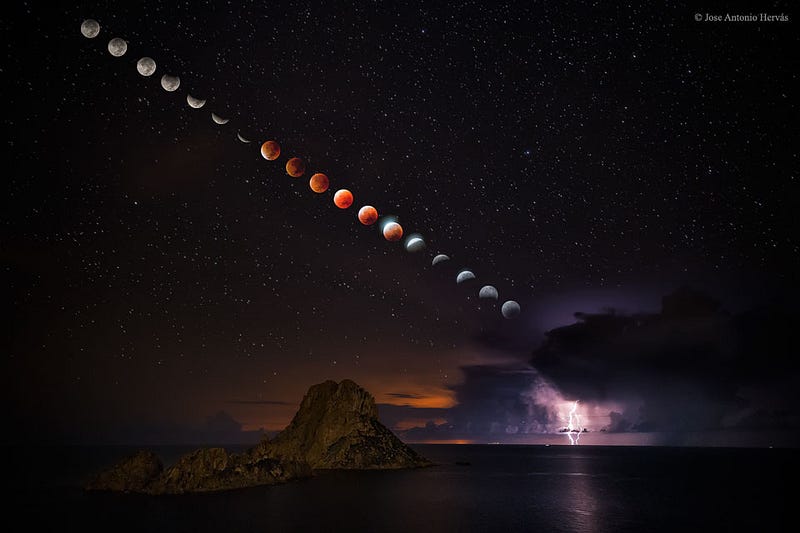
Hundreds of millions of skywatchers got to take in this sight, and for most of us, we saw a predictable pattern that’s always spectacular:
- The bright Moon illuminates the sky, slowly darkening on one side.
- The shadow of the Earth starts to “consume” the Moon, sliding across the surface and blocking out the moonlight.
- When the last sliver of brilliant crescent starts to disappear, the red “blood Moon” begins to show, an artifact of the Sun’s rays being bent through the Earth’s atmosphere and landing on the lunar surface.
- After a little over an hour, the Moon reaches the other end of the Earth’s shadow, and the reverse process occurs: the red disappears as a bright crescent begins to reappear, and the shadow slides off the Moon, returning it to its former, full, glorious state.
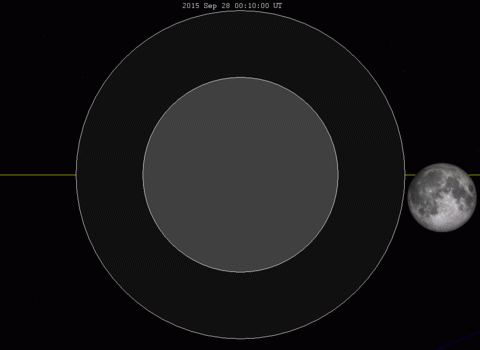
Sure, you might only see part of the eclipse depending on where the day/night border occurs relative to the eclipse time, but this is not such an infrequent sight: total lunar eclipses occur on average around once a year. We get a chance for one every six months or so, with about half being partial eclipses and half being total, although the total eclipses tend to be clustered in groups of twos, threes or fours.
If you watched the sky from an urban or even suburban location, chances are you didn’t notice much difference in the sky: light pollution in many populated, industrialized places is severe. The sky near the Moon might have shown a few more stars than normal, but that’s probably the only thing you’ll have noticed was different.

But if you head out to a dark sky location — away from bright, artificial light sources — by far the Moon would be the brightest source of light pollution. During a full Moon, the light pollution is severe enough that it’s the equivalent of being inside a somewhat large city like Portland, OR, Madison, WI, or Tucson, AZ.
But if you head out to the darker locations on Earth, and you don’t have a Moon in the sky, what you can see becomes spectacular.
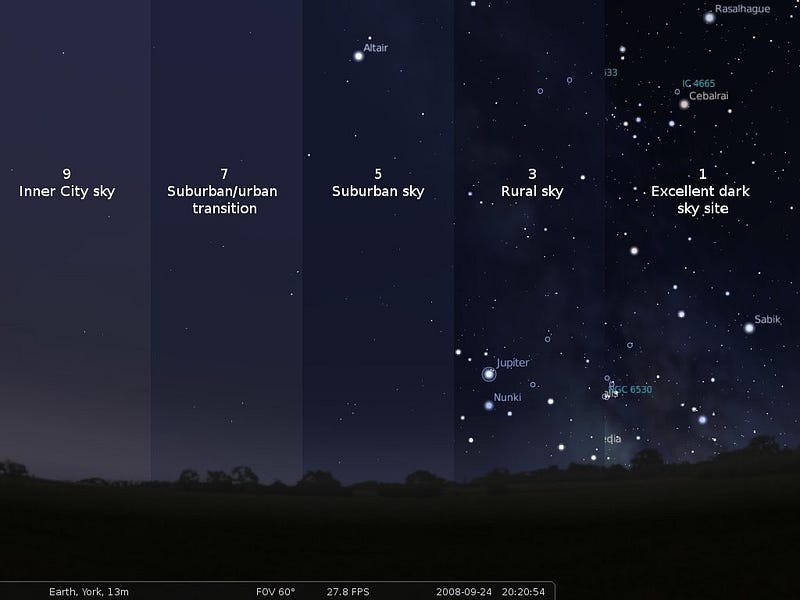
While you might see a few dozen, or perhaps a hundred or even two hundred stars in the sky in an urban/suburban location, they appear as faint pinpricks, barely discernible from one another, and inevitably whitish in color. But from a dark sky location, lots of unseen details suddenly become apparent. These include:
- The Milky Way becomes visible, painting a large swath covering a full 180 degrees on the sky.
- More and more stars appear to come out: hundreds or even thousands depending on how dark the skies are. Constellations like Cassiopeia go from 5 to 7 to many stars, while the Pleiades go from 6 to 12 or more.
- Some deep-sky objects, like the Orion Nebula, the Andromeda Galaxy or even the Triangulum Galaxy, become visible to the naked eye.
- Detail in the Milky Way emerges, showing relief, dark-and-light patches of varying hues, and with the wider parts — the parts closer towards the galactic center in the constellation of Sagittarius — becoming gigantic.
- Star colors become apparent for the brighter stars, with reds, oranges, yellows and blues becoming clearly distinct from one another and the more common “white” ones in appearance.

From a light-polluted area, the difference between a sky with a thin crescent Moon, a half-full Moon, a gibbous Moon and a full Moon are practically indistinguishable. Sure, the sky from directly around the vicinity of the Moon might be changed, but the overall brightness of the sky — and what’s visible — won’t change by much. But from a dark sky, that difference is phenomenal. And what’s even more spectacular is that you can see that difference transition over the course of just a few hours if you have a total lunar eclipse taking place.

For the first time in my life, I got to watch one from a dark site: the foothills of Mt. St. Helens, which ranks about a 4 (bordering on a 3) on the Bortle Dark-Sky Scale. Where I was, the Moon was totally eclipsed by time it rose over the trees, meaning I had the brilliant, dark skies at my disposal. A blood-red Moon — whiter and brighter on one limb — was the highlight of the sky, but over a thousand stars, a detailed Milky Way, and lots of colorful stars shone brightly. Arcturus was a bright orange, the stars of the Big Dipper glowed blue, and brilliant Vega, the highlight of the Summer Triangle, was directly overhead and barely twinkled at all, making it easy to mistake it for a planet.

As the Moon came out of eclipse, a brilliant sliver of greyish Moon emerged on the eastern side, a sign of the Earth’s shadow slipping off of it. But the Milky Way was still visible overhead, just gradually less-and-less detailed. The fainter stars slipped away into the night, while the brighter stars became fainter and less colored.
But there was a surprise to me as well. The portion of the Moon still in eclipse — much to my surprise — remained reddened in color! It only occurred to me at that moment that the un-illuminated portion of the Moon, the part still in eclipse, would still be the recipient of the light of Earthshine, but that light would be predominantly red while the Moon was in its full phase! From an urban location, the sky is too bright to see that red against the contrast of the bright, illuminated crescent, just as only the tiniest crescents allow you to see the Earthshine on a nearly-new Moon.
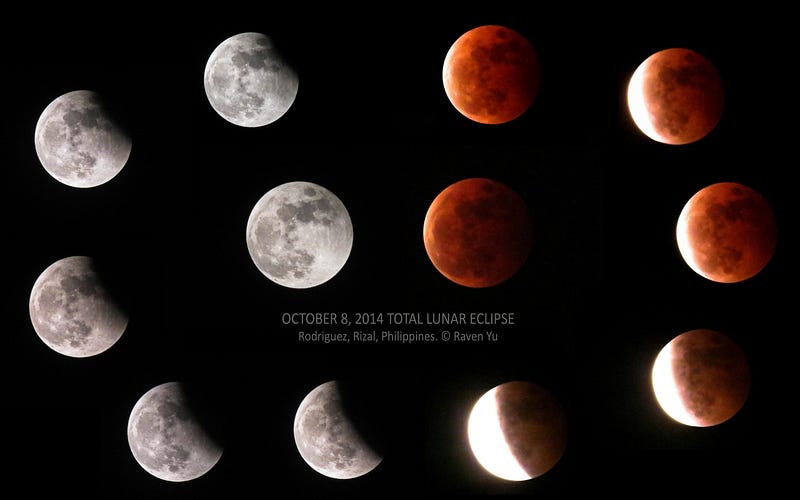
But even as an hour ticked by, and the Moon emerged more than halfway from the Earth’s shadow, the shadowed portion was still visible with a reddish hue. The Milky Way eventually disappeared completely, as did the color from all the stars. As the Moon at last became full again, only around a hundred stars were visible, and the night was awash in moonlight.
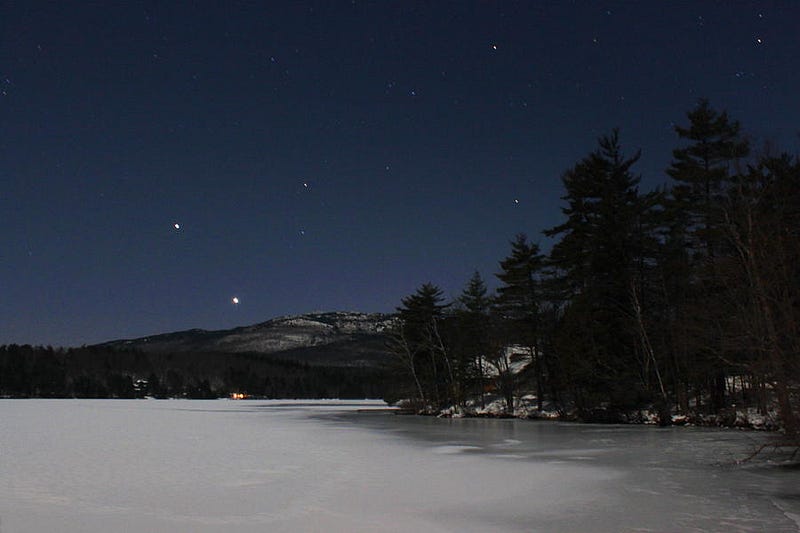
Many of us got to appreciate and experience the lunar eclipse, but seeing it from a dark sky site added a whole new layer of appreciation to it. Total lunar eclipses will return to Earth in 2018 and 2019, when we’ll have three in a row once again: January 31, 2018, July 27/28, 2018, and January 20/21, 2019.
Try treating yourself to a dark sky to experience the next one. You just might be surprised at the awe it inspires inside of you.
Leave your comments on our forum, and support Starts With A Bang on Patreon!





